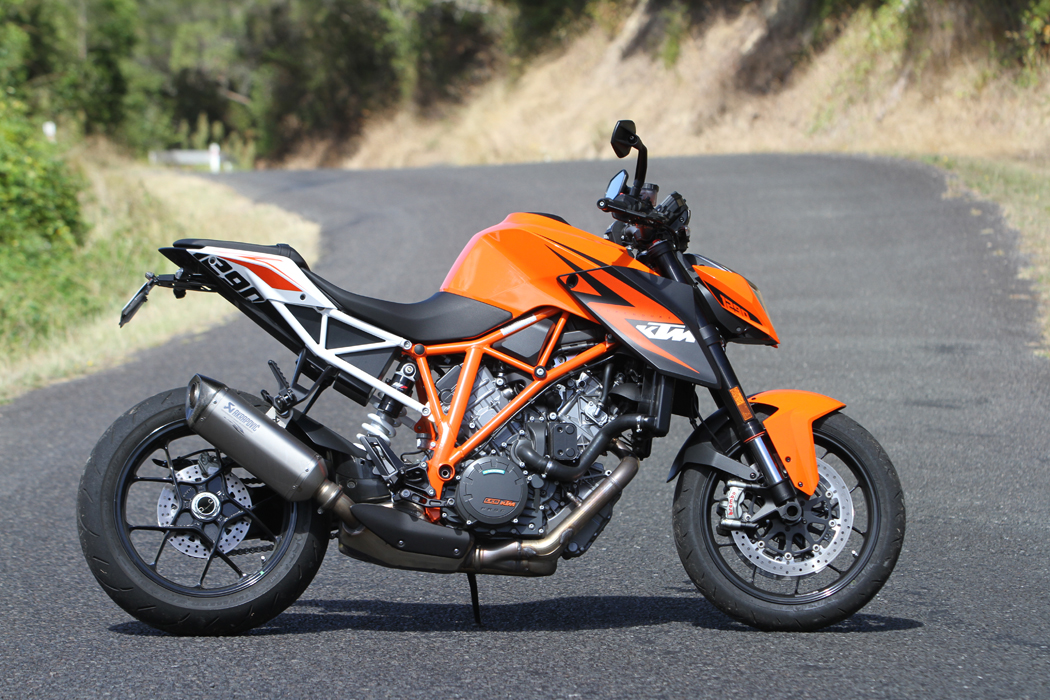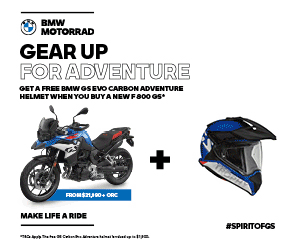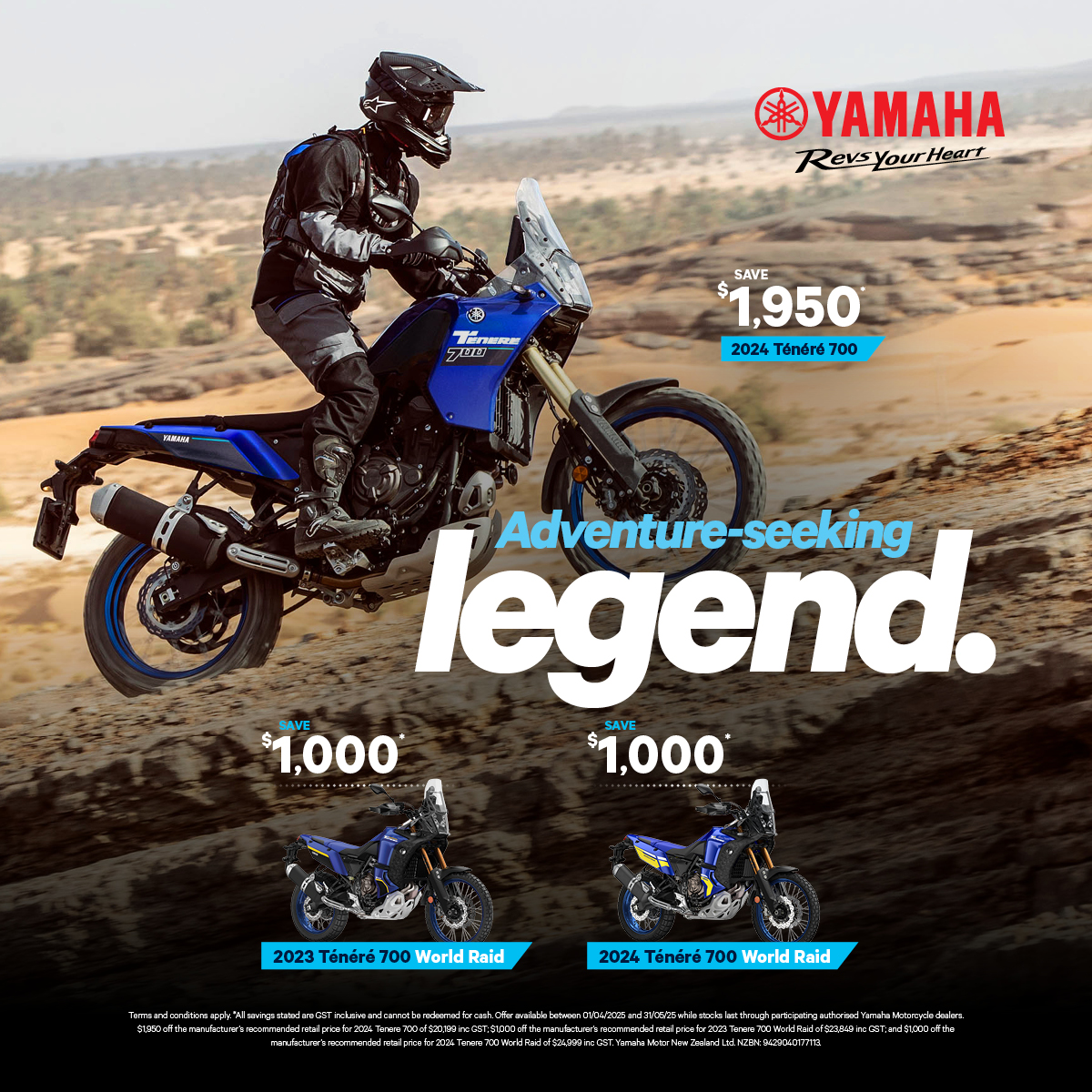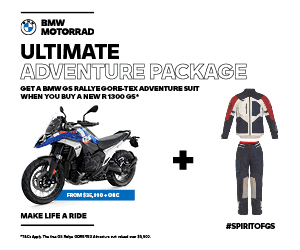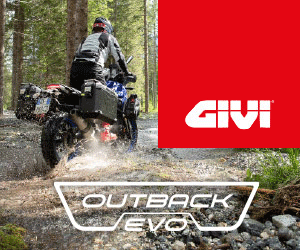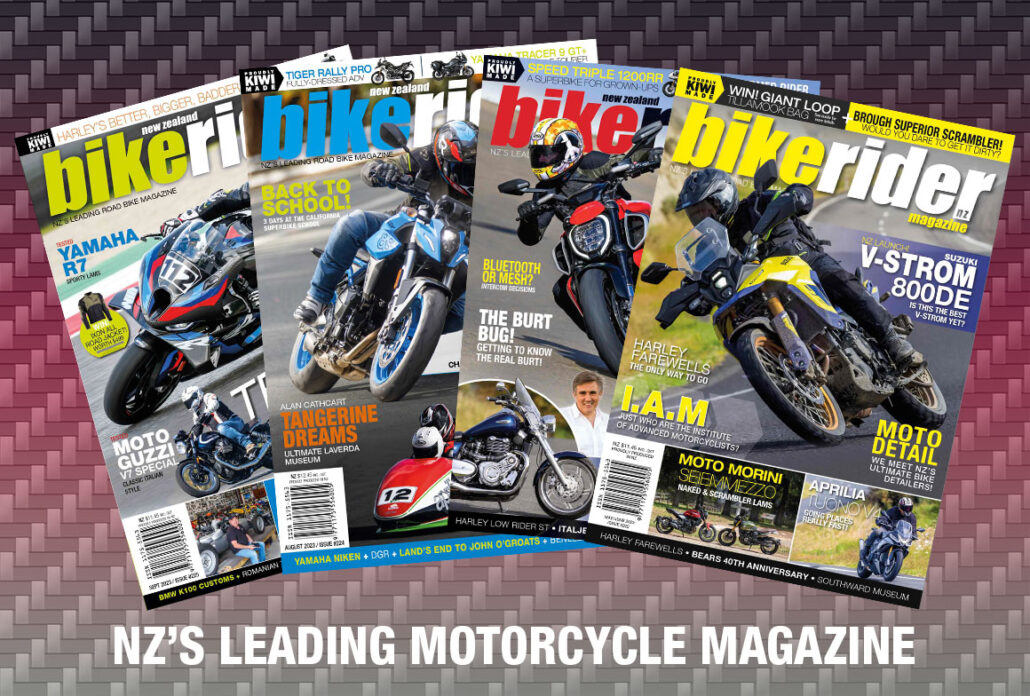Sir Duke
With the latest Superduke R receiving a breathed-on version of the Adventure’s LC8 powerplant, BRM went to find out if there’s life in the old twin yet…
The LC8 motor began life powering KTM’s first serious sportsbike, with the futuristically-styled RC8 R superbike gaining a following thanks to its useable power delivery and comfortable ergonomics at a time when the competition were getting peakier and more radical.
Since then the LC8 has been used to power KTM’s big-bore Adventure bikes as well as the Super Duke, with the latest incarnation being the third generation of the naked machine. After spending some time on the Super Duke R, it’s hard to imagine how this bonkers motor could be usable in anything else, with so much power and torque from almost negligible revs making it incomprehensible how a mere mortal could manage it on the dirt. But KTM have somehow managed to convert what is a mild-mannered motor in the Adventure into this crazy tarmac terror thanks to a bit of internal wizardry, giving the same basic design the ability to work in both environments.
The LC8 motor has grown in capacity to 1301cc from the original size of 990cc thanks to an increase in the bore by 3mm and the stroke by 2mm, while twin-plug heads and a bit of Formula 1 knowhow have allowed the Austrians to squeeze a claimed 180hp out of the 75degree V-twin and an astonishing 144Nm of torque. And even more incredible is the fact the new motor produces more torque at a lowly 3000rpm than the old Super Duke unit did at its maximum. Added to this is the fact that the R is a minimalistic machine, with the usual KTM tubular space frame laid bare for all to see and the beautiful single-sided swingarm is the lightest in its class. The whole machine is designed with one purpose in mind; to be an agile, stripped down street machine that will make your hair stand on end as soon as you open the throttle.
Under Control
As you’d expect nowadays and especially on a bike with the sort of power to weight figure of the Super Duke R (almost 1:1), KTM have worked hard on the electronics package to help the rider get the most from the powerplant. Firstly, the fly-by-wire throttle has been vastly improved from previous versions of the Duke, with a smoothness of response that is almost perfect. The LCD information screen lets you flick through various modes via the buttons on the left handlebar, with the drive mode able to be switched through Street, Sport or Rain, the ABS system able to be switched on and off, as is the traction control. The numerous different screens give you plenty of information and are easily negotiable thanks to a simple and intuitive system.
Despite the angular styling and aggressive looks, the Super Duke saddle is a surprisingly comfortable place to be, the reach to the bars is natural, the seat features reasonable padding and the pegs aren’t crazy high. The only factor that is really going to limit your time on this bike is the lack of wind protection, with the clocks and sit-in riding position only able to do so much wind deflection, and also the likelihood that your licence will be in jeopardy every time you take the Super Duke out of the garage. Keep it in the lower power mode with the traction control on and you stand some chance, but what’s the point of owning a bike like this if you’re not going to have some fun…
Thankfully, the Brembo braking package is possibly one of the strongest and best I’ve encountered, with mind-bending braking performance available with a slight squeeze of the lever. Luckily the ABS system is there to help out if you get too carried away, with the level of intervention altered depending on the selected ride mode. As mentioned, you can turn the system off if you don’t want any intervention, say, when you’re on the racetrack. But there’s also a “Supermoto” mode which only deactivates the ABS on the rear wheel, allowing those legends out there to slide the rear into corners while having the safety net of ABS at the front.
Real World
With the Super Duke’s styling looking so focussed, I was interested to see how it would cope in the real world, or whether it was going to offer a massive amount of excitement for the first half hour and then become a proverbial pain in the arse for the rest of the trip.
Tiptoeing through town and it was evident that KTM have got the whole fuel-injection thing sorted; the fuelling at low speeds with small throttle opens now effortless. The gearing was obviously very tall, with sixth able to see the speedo reading well over 250km/h and making open road speeds more comfortable in fifth rather than in top to keep the giant twin pistons smooth. But with oodles of torque down low in the rev range, it still meant that the silky gearbox didn’t need to be bothered for anything other than the fastest of overtaking manoeuvres, and it soon became apparent that the Super Duke could be toured around on with relative ease. But that’s not what this bike is all about, and with quieter roads sought out, it was time to flick down the ’box and unleash the beast.
Instantly, the Super Duke changes character and reveals the mongrel that has been hiding inside. Pulling out of intersections and gunning the throttle sees heavy electronic intervention stopping you from ending up on your arse on the floor in first gear, while slightly less is dialled in once you snick through to second; the front wheel lifting slightly before the electronic brain works it out and steps in again. At open road speeds, nail the throttle in third or fourth gear and the Super Duke leaps forward like nothing else, wanting to lift the front wheel almost whenever you open the taps of the twin throttle bodies.
WP has taken care of the suspension, producing a package that gives a perfect balance between firm and comfortable. Separate function forks see compression handled on the left and rebound on the right, with 125mm of travel enabling the Super Duke to iron out many of the bumps we come across on the road. We kept the standard settings for our test and didn’t find the need to stiffen any of the settings, with the USD forks offering good bottoming resistance while still being comfortable. Okay, if we were campaigning the Super Duke R on the track then the ability is there to stiffen the settings up, but on the road the package worked well.
But what was really frustrating me was the traction control system, with the wheelie control spoiling the fun that was becoming more obvious was available the more time I spent on the Super Duke. The motor is simply incredible with the linear way it produces power, making it a wheelie dream. Coming out of corners, top gear over crests, pretty much anywhere at any speed, the Super Duke can be encouraged to lift the front hoop, which is obviously why KTM chose to fit a steering damper as standard. Not that the chassis is flighty, but with the front wheel coming off the road so willingly, it’s only a matter of time before a bump will upset it and cause a bit of a flap.
Unfortunately (and quite surprisingly), you can’t deactivate the traction control and therefore the wheelie control on the move, with a reasonably convoluted process required at standstill to turn the system off. Pressing a button or having a setting to keep traction control but deactivate wheelie control would have been far more preferable for Super Duke owners I would imagine, and as the system reverts to original settings each time you turn the bike off, owners are going to find themselves going through the process relatively often I’d imagine.
It’s a shame, as once the traction is turned off, it turns what was an impressive motorcycle into an absolutely incredible one, showing just how much intervention had been going on unnoticed previously. The acceleration is astonishing, with a deft throttle hand required to keep the 1482mm wheelbase from swapping ends. Thankfully, the Brembo rear brake is also strong, with only a slight jab required to get the front wheel down should you get a bit carried away, but it pays to keep your foot hovering there should you start having a bit of fun with the wheelie control turned off.
A glance at the digital speedo, which is embedded within the analogue tacho, shows the numbers frantically trying to keep up when you’ve got the throttle held open, although both Kev and I felt the speedo was a bit optimistic when sitting at legal speeds. A bit of side by side with the BRM ute showed the Super Duke was 10km/h on top of what the car was reading, which itself is likely to be about 10% out. But despite that, there’s no denying this is one seriously quick bike.
Off the straights and into the twisties, the Super Duke R comes into its own, the wide bars (which angle back slightly making the reach slightly less) allow you to flick the 189kilo machine effortlessly from one side to the other, the revs rising and falling as the tailor-made Dunlop Sportsmart tyres go from edge to edge. Tyres are likely to be high on your shopping list if you own a Super Duke R, the amount of power and the fact you can’t help but ride with a heavy hand likely to make rear tyres disappear in record time. But hey, you don’t get this much fun without using something up.
As you’d expect with a European brand, a full compliment of accessories are available from KTM for the Super Duke, letting you personalise your bike. Our test bike had a tail tidy which, well, tidies the rear-end, as well as a fruitier end-can. The Super Duke sounded glorious, with the popple from the over-run almost addictive going into turns. Not so impressive were the ‘J-bars’ which are pretty much just for show unless you intend on racing your Super Duke.
Performance Perfection
It’s when you ride a bike like this that you question why we still ride superbikes on the road. I don’t think there is any situation (other than the racetrack) where I could honestly say I’d prefer to be on a sportsbike. The Super Duke has as much usable power delivery at real world speeds, a better riding position, comparable brakes and suspension and still looks just as jaw dropping as any superbike. Okay, on a racetrack you’d expect the sportsbikes to have the edge, aerodynamically, but I can assure you it wouldn’t be by much, especially with our short tracks here in NZ where top speed isn’t really a factor.
With $5 change from $30k, the Super Duke is getting into the realms of the flashier superbikes, like Ducati and Aprilia. But I still think if I was to buy a bike that was to put a smile on my face every time I rode it, then the Super Duke is worth every cent, especially as it’s not a one trick pony. Despite its looks and lack of protection from the elements, the Super Duke can still turn its hand to plenty more than you’d expect from such a high performance naked.
That Engine!
The LC8 powerplant is one of the most powerful, yet lightest V-twin powerplants on the planet. The twin throttle bodies have been increased in size from 52mm to 56mm while the Keihin engine management system focuses on maximum power combined with usable characteristics. The DOHC, four-valve cylinder heads feature twin plugs for efficient combustion, more power, more torque and less fuel usage. Forged pistons are 47grams lighter despite being 3mm bigger and friction has been minimised allowing the big twin to rev faster and harder.
Clever Clocks
With electronics being such a big part of the Super Duke R, you need a decent set of clocks to let you know what’s going on. The inset display in the rev counter gives you specific ride information like speed, trip etc, while a separate screen to the left gives you the additional information and lets you toggle settings on and off. The system is intuitive and is accessed via the switches on the left handlebar.
Kev 2nd Opinion
After waiting for these bikes to finally touch down here in NZ, I was a little concerned that time might have seen the bar set too high for the new 1290 Superduke to hurdle, expectations rising with the anticipation and all that.
It sure looked the part, crouched in that aggressive ‘about to leap’ pose, made better by the optional tail tidy (not optional when you see the stocker…) and the tidy can. After spending a nanosecond or so familiarising myself with it, as I had done the research, all I needed was the bloody bike!
Anyway, settling down and deciding to leave the nana-button alone (it defaults to arse-covering when the ignition is turned off), I headed out. Relieved that it felt as good as Roland reckoned in the launch test in issue #115 (yes, we had been waiting for five months) it was time to play around with the electronics. I can sort of understand why the brains department have opted for ‘to misbehave, you must stop and deliberately switch the aids off ‘ – therefore absolving themselves of litigious issues, kind of a digital disclaimer in practise, but logic suggests that, lawyers aside, it would be better if there was an on-the-fly selection. That said, once you admit you’re a hoon and hit the button, it’s fantastic preceded by a big capital F. Yup, it pops wheelies, bakes up and generally threatens to whup your arse if you go too far. It’s a lesson in respect and the transformation, even when not worrying the limits of traction, makes the bike more exciting, just knowing what it is. The Adventure 1190 sourced software gives an interesting ABS option (still labelled off road), as in front-only as well as off, but the system is pretty sweet and will usually be left on for normal use.
Moving on, the claim of 180hp feels perfectly justifiable, as does the completely nutty 140Nm of tyre twisting torque. The light weight and wide bars do the rest. Yep, it has stumped up the stakes in the power-fiend end of the naked class, and it does it with better than average comfort, manners and general handling. In short, it’s by far the best thing KTM have stuck a numberplate on. It’s also the new king of the hill in the nude category, although it doesn’t have it all its own way, as the Tuono has the aforementioned on-the-fly electronic adjustability that I wish the KTM had and we’ve yet to sample BMW’s new S1000R.
Not cheap but well worth the coin if you have it to spare; it’s one hell of a bike.

